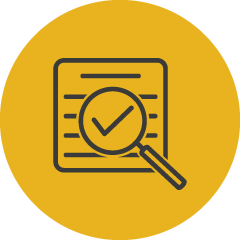
You are viewing the Institution version of this CEO Update. Institutionally Related Foundation and System versions are also available.
By now you are aware of yesterday’s groundbreaking Supreme Court decision that race-based admissions practices violate the Equal Protection Clause of the Fourteenth Amendment of the Constitution. It portends a momentous change in how American colleges and universities determine who will compose their student bodies. My AGB colleagues and I are profoundly disappointed in the ruling. AGB believes that colleges and universities should be allowed to pursue their educational missions through holistic means (including the consideration of race in admissions decisions), and we asserted that position in a higher education community amicus brief when the Supreme Court accepted the case for review.
While the precise consequences of this decision will differ for each institution, we are confident that colleges and universities will continue to prioritize student success for all students; uphold the principles of justice, diversity, equity, and inclusion; and strive to provide an inclusive and welcoming educational environment in this new era, all while being in compliance with the law as it continues to evolve. As your strategic board governance thought partner, AGB is developing resources and programs that will provide guidance to board members and institutional leaders in the wake of the court’s decision. We stand ready to support our member institutions in these vital efforts.
Board members and senior executives serve consequentially when they have a solid understanding of their roles, extensive knowledge about how they fit into their organizations, and chances to develop their skills and perspectives alongside their peers. The simplest way to ensure those conditions are met is through a strong orientation, followed by sufficient opportunities to gain additional educational experience throughout board service.
Given higher education’s rapidly changing environment, it is paramount that strategic governing board and administrative leaders continuously evaluate and enhance the quality of their board member orientation and ongoing education programs.
Why it matters: Effective orientation and ongoing board education enable board members to serve more rapidly, and ably, as consequential strategic thought partners focused on institutional priorities, bolstering the aggregate value of the board and its contributions to student success and organizational vitality.
Consider these six recommendations to enhance governing board member orientation and ongoing board education:
1. Develop a comprehensive, board member-specific education program that begins with orientation and ends when the individual leaves the board. Responsibility for administering the program can fall under the purview of board and committee chairs, the chief executive officer, and especially board professionals.
- Consider what should be included on the first day, month, year, and then beyond. Each education program is different.
2. Leverage AGB’s complimentary online board member orientation program to supplement your institution’s efforts. AGB’s orientation program is designed to be an indispensable introduction—or refresher—to board service.
- AGB updates the orientation program on a regular basis as higher education board governance challenges evolve, and provides new thought leadership content on emerging topics.
3. Consider creating a mentorship program. Board service is a unique role. For some new board members who serve as senior executives in their day jobs, the transition can be difficult.
- Pairing new and veteran board members can enhance board-wide educational opportunities and provide a sense of cohesion to board decision-making.
4. Provide opportunities for reflection and feedback. Chief executive officers and board professionals should seek feedback from board members about which program elements could be improved. These leaders should commit to updating board orientation and ongoing board education programs on a regular basis.
5. Use board assessments to identify areas for board member growth. Assessments help boards and administrators determine capabilities, capacity, and gaps in knowledge. Additionally, strategic governing boards use assessment results to tailor their ongoing board education programs, and consider AGB resources and services to help them govern with knowledge and confidence.
- For example, shared governance is a foreign topic for many new board members. AGB’s new publication, Shared Governance for Agile Institutions, was designed to align board expectations with leading shared governance practices.
6. Create time for board members to foster relationships with their boardroom colleagues and administrative leaders so they build rapport. Boards established new remote meeting standards and expectations during the COVID-19 pandemic, and many continue to meet remotely in some instances. While remote meetings increase flexibility, in-person meetings remain a critical component to building effective board relationships.
- Board members and senior leaders should seek to connect with one another in person, including time without official business agendas. While adhering to any open meetings rules, administrators should consider when and how board members should connect with campus and community leaders.
Go Deeper:
- Review the AGB board member orientation program for public and private colleges and universities. AGB also offers a supplemental board member orientation program for Catholic institutions, in partnership with the Association of Catholic Colleges and Universities.
- Reflect on the Principles of Trusteeship, AGB’s guide to help board new and seasoned board members become more strategic, consequential, and effective.
- Read the Trusteeship magazine article “To Improve New Board Member Orientation, Flip It!”
- Consider engaging in a facilitated board workshop on important topics through AGB Consulting.
- Examine AGB’s orientation FAQ document and Knowledge Center page on board orientation.
Questions for governing board and committee chairs
- What is my role in educating new board and committee members?
- How should our board member education be distributed among committees?
- How can I benefit from coaching or other role-specific education?
- How can AGB Consulting help us build customized board and new member education programs for our institution?
Questions for governing board members
- How can I supplement my board’s ongoing educational opportunities?
- How much time should I spend on my board member development outside the boardroom?
Questions for chief executives and leadership teams
- When was the last time we updated our new board member orientation program?
- Does our new board member orientation and ongoing board education program include opportunities for feedback?
- Can our faculty and administrators help support new and existing board member education with strategic insights or subject matter expertise?
Meaningful board member orientation and ongoing board education are not just “nice-to-haves”; they are integral to creating a highly effective, strategic governing board. I recognize it can be difficult to include board education among the myriad challenges, topics, expectations, and responsibilities that board members have in their roles, but the return on the investment of time and resources will be invaluable.
RELATED RESOURCES

FAQs
Board Orientation

Trusteeship Magazine Article
To Improve New Board Member Orientation, Flip It!

